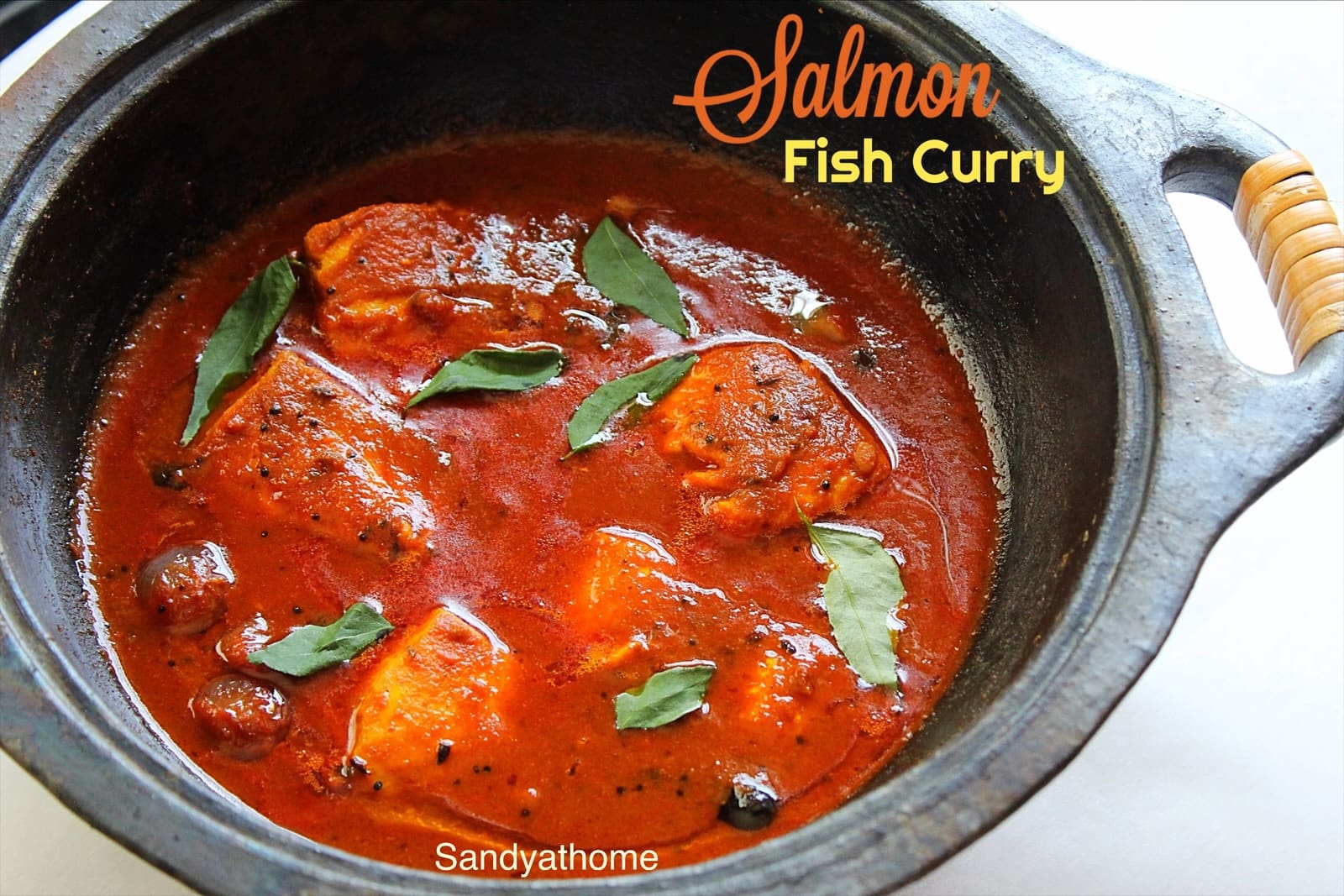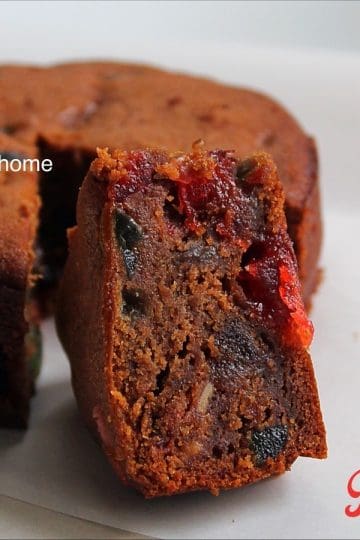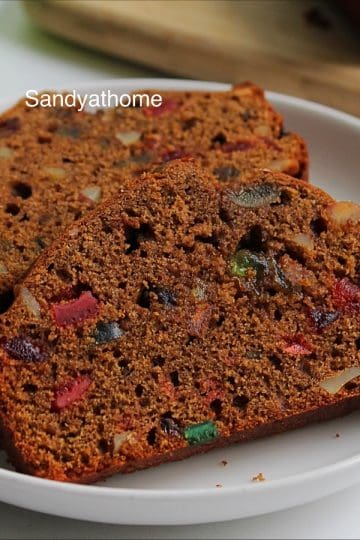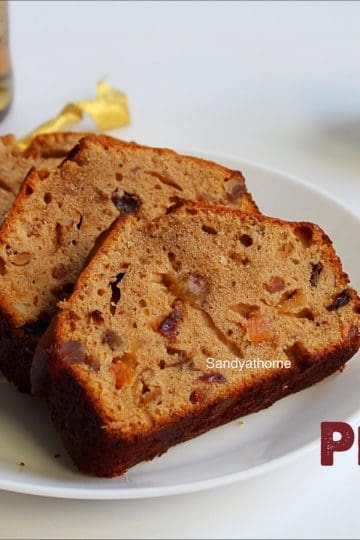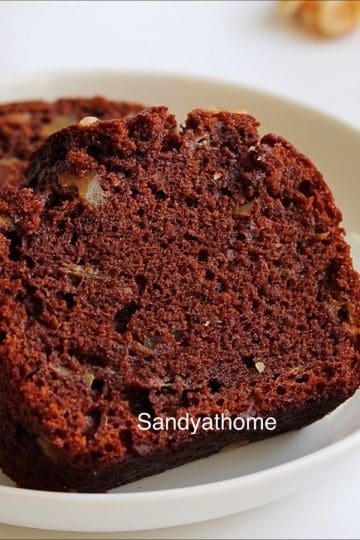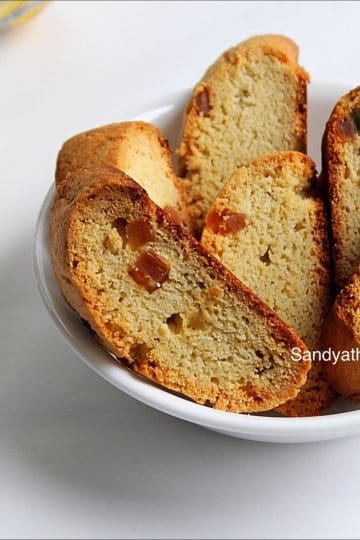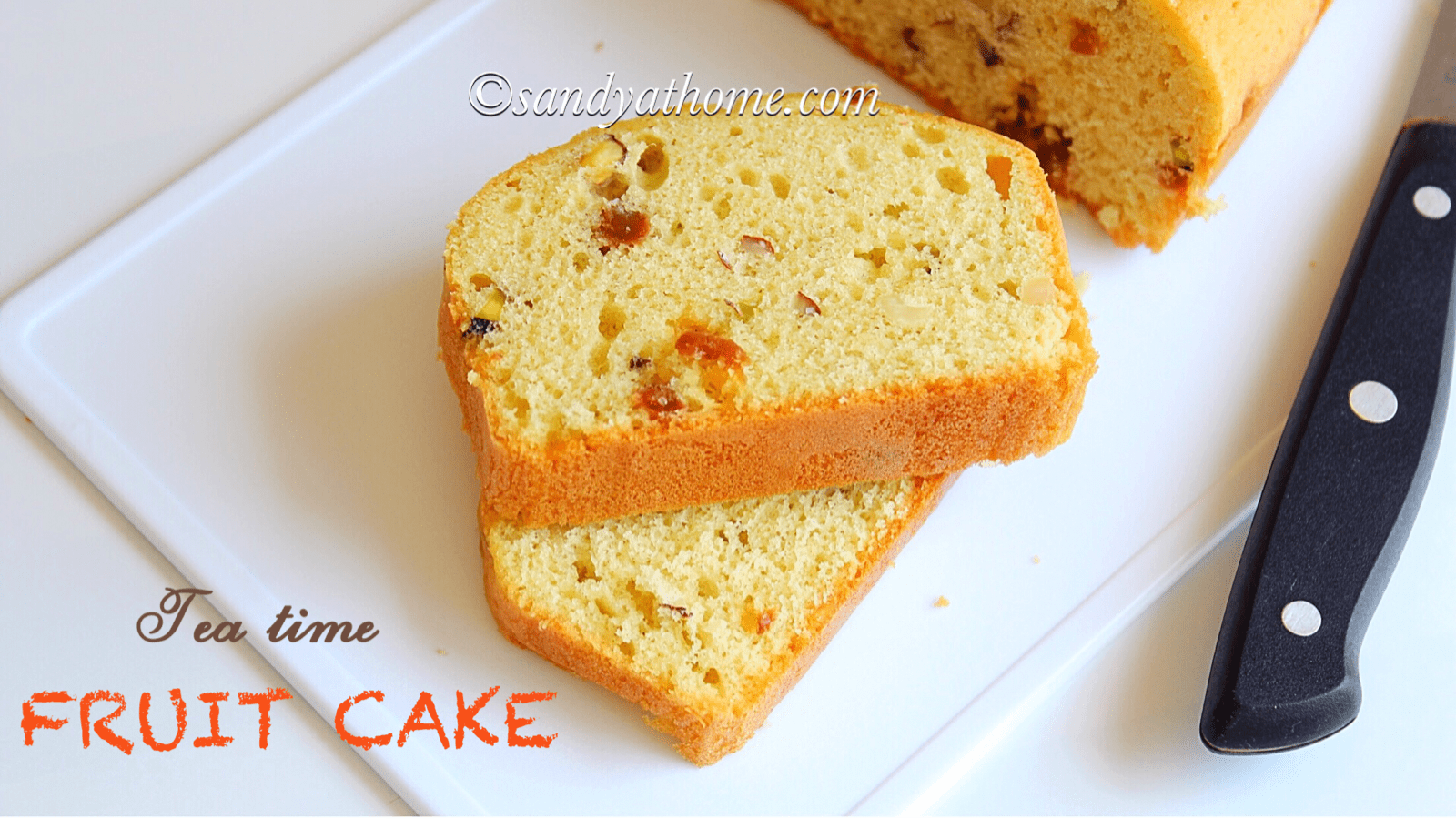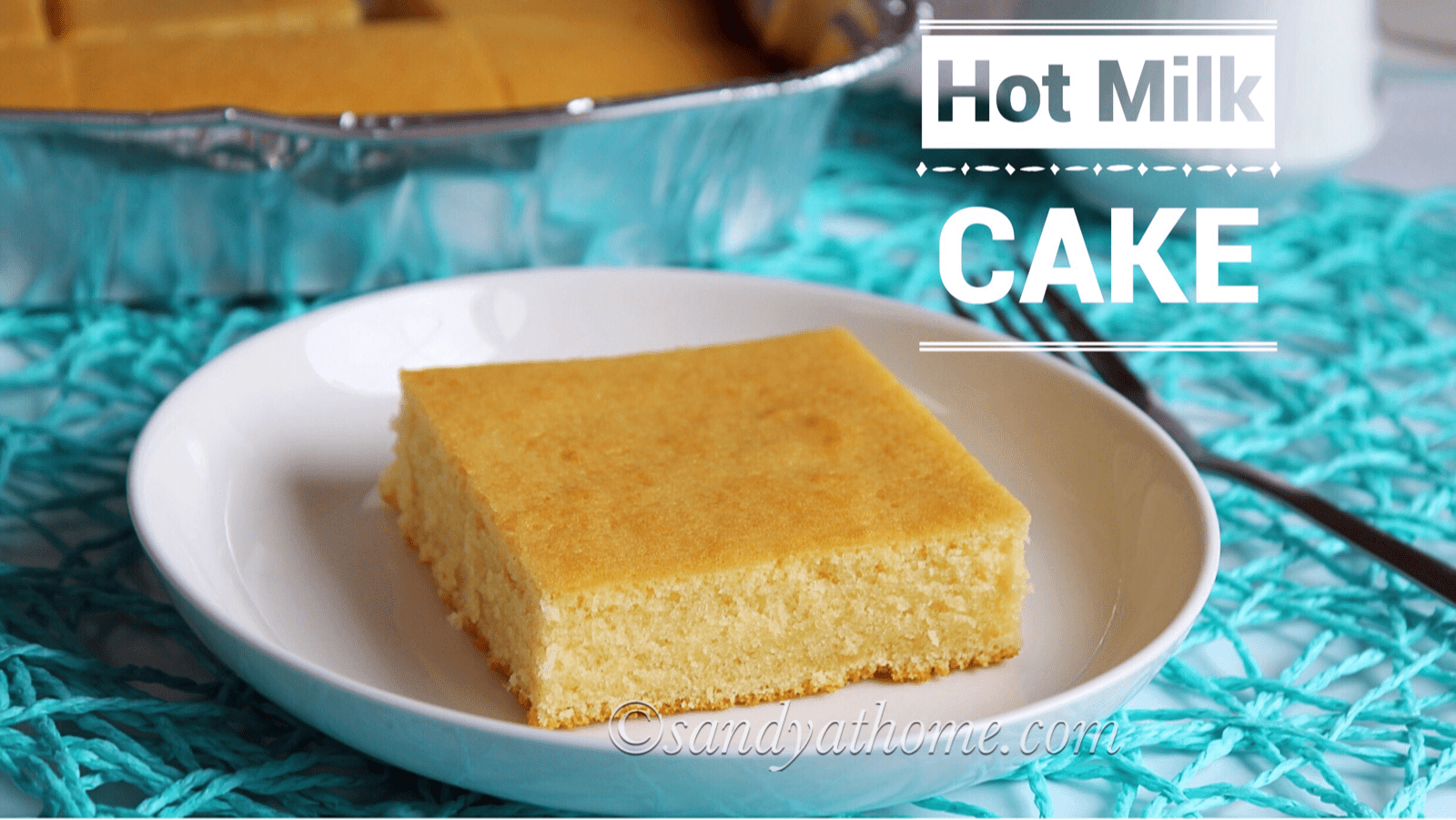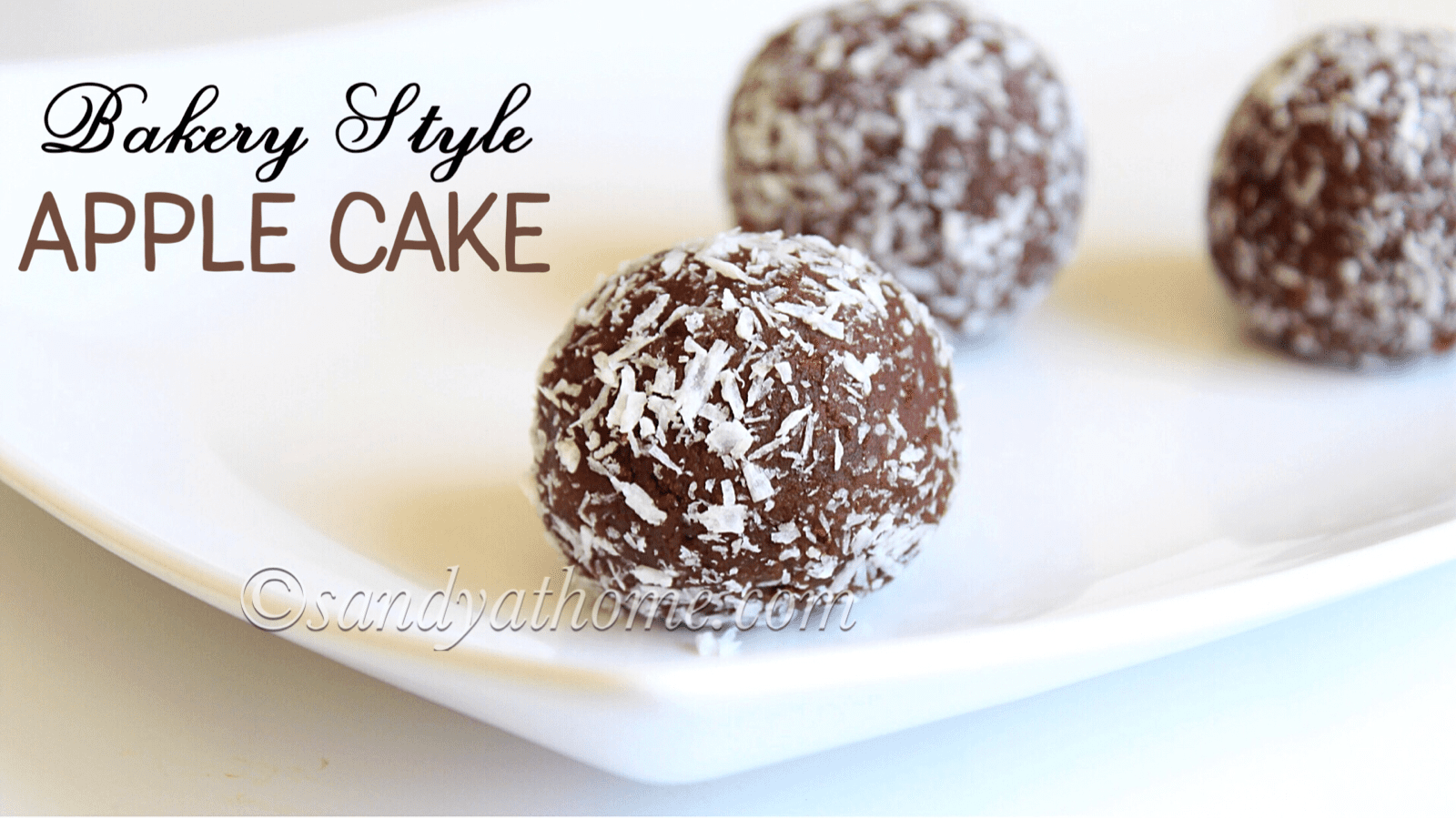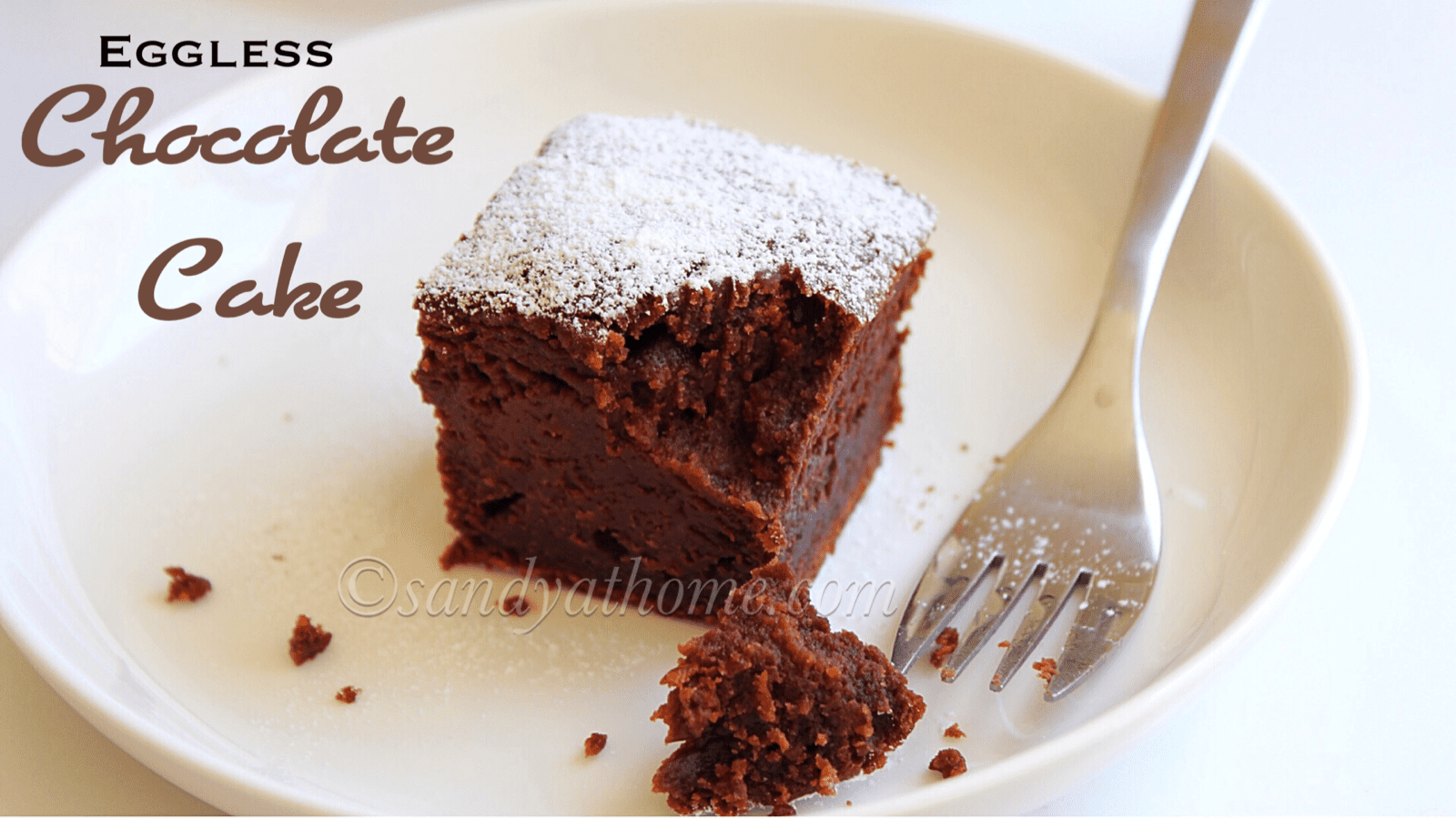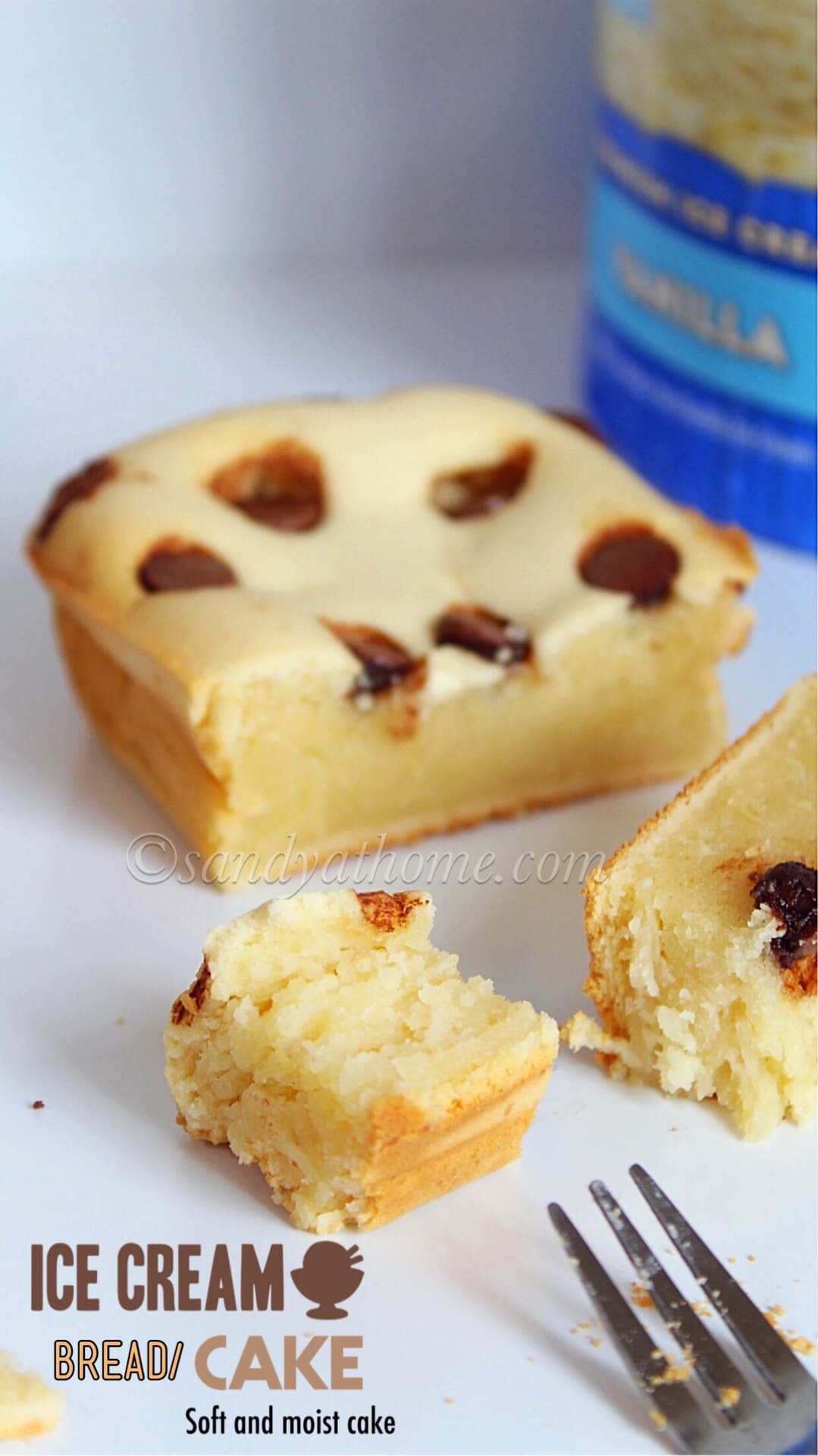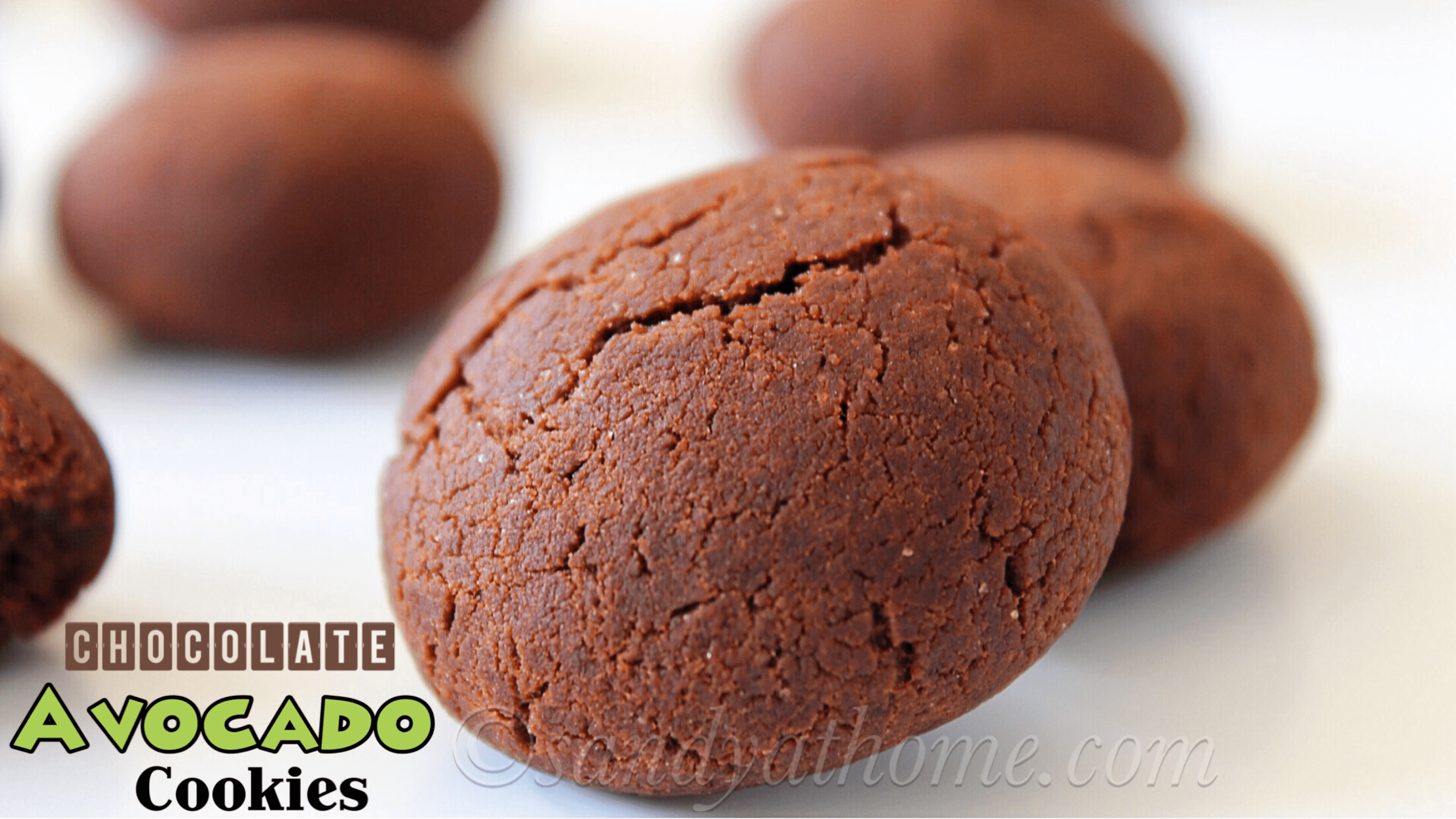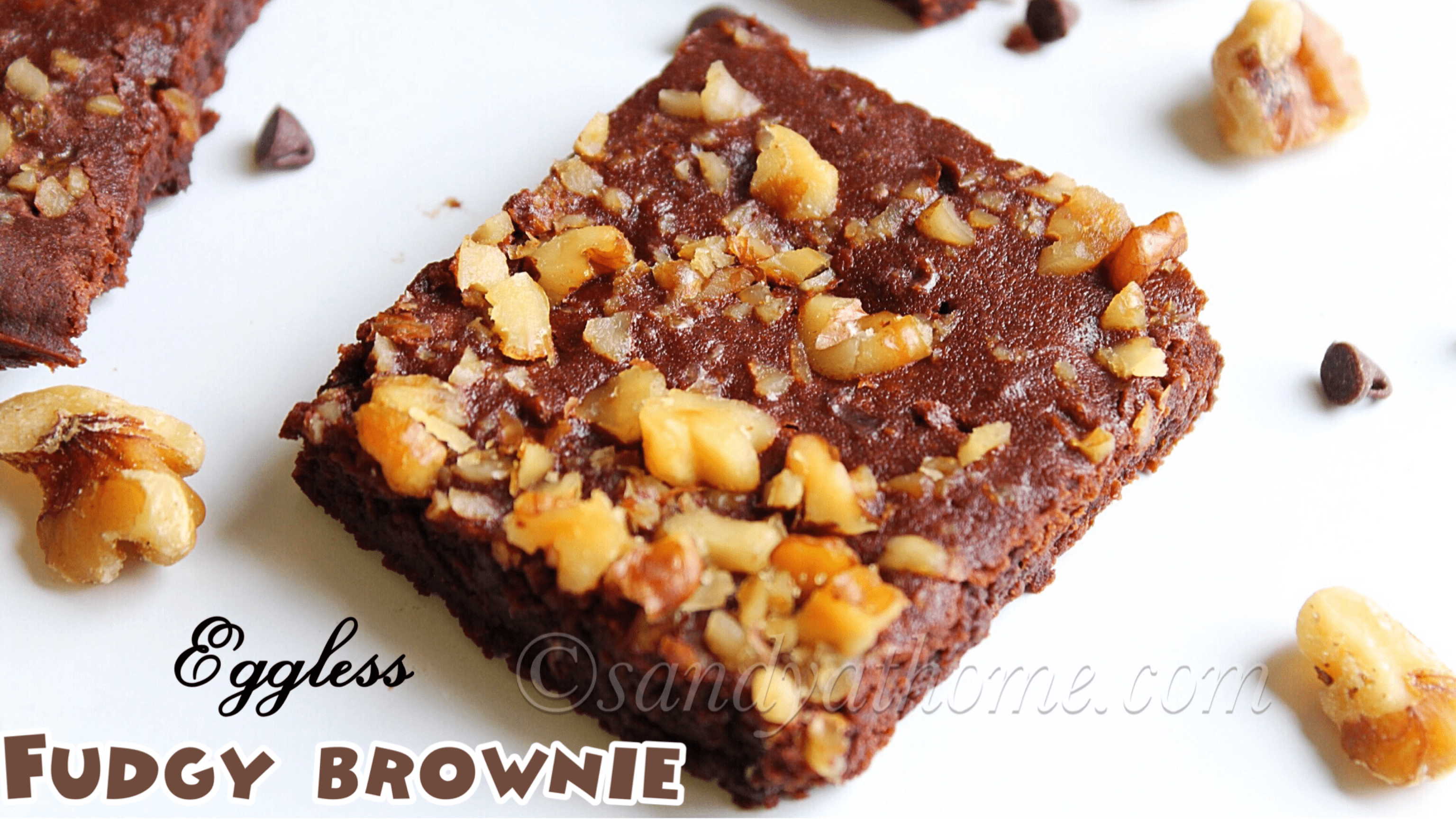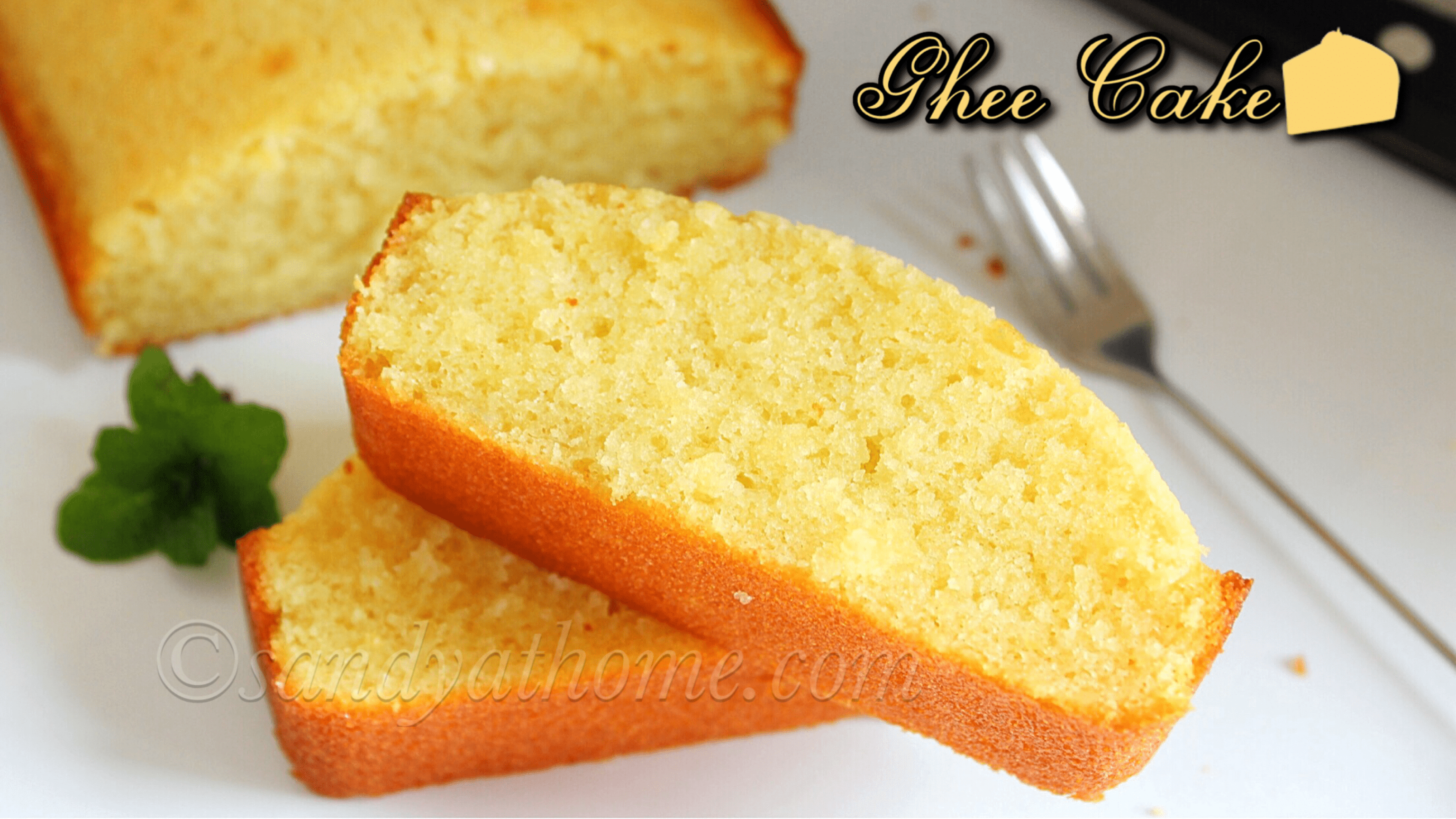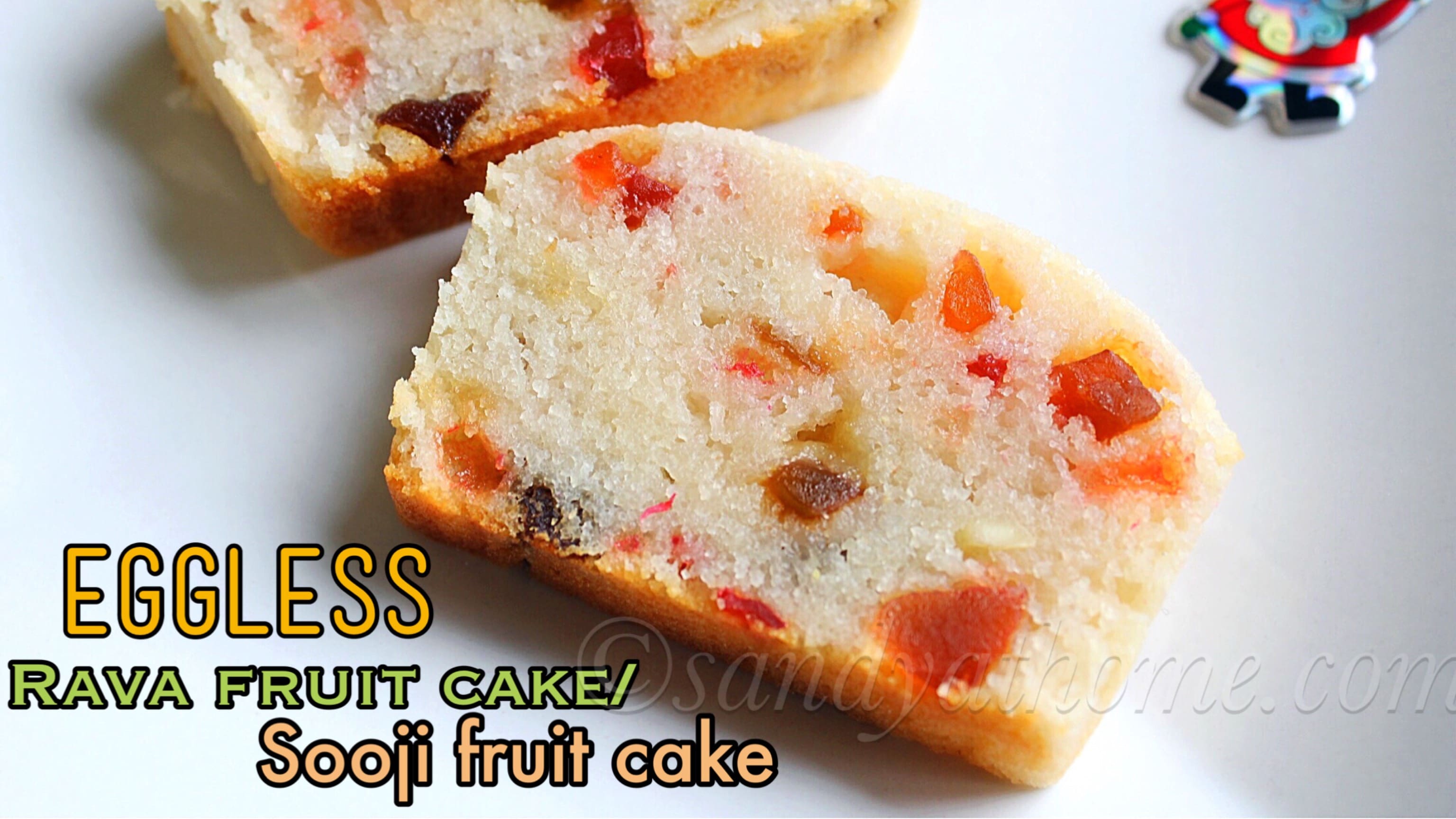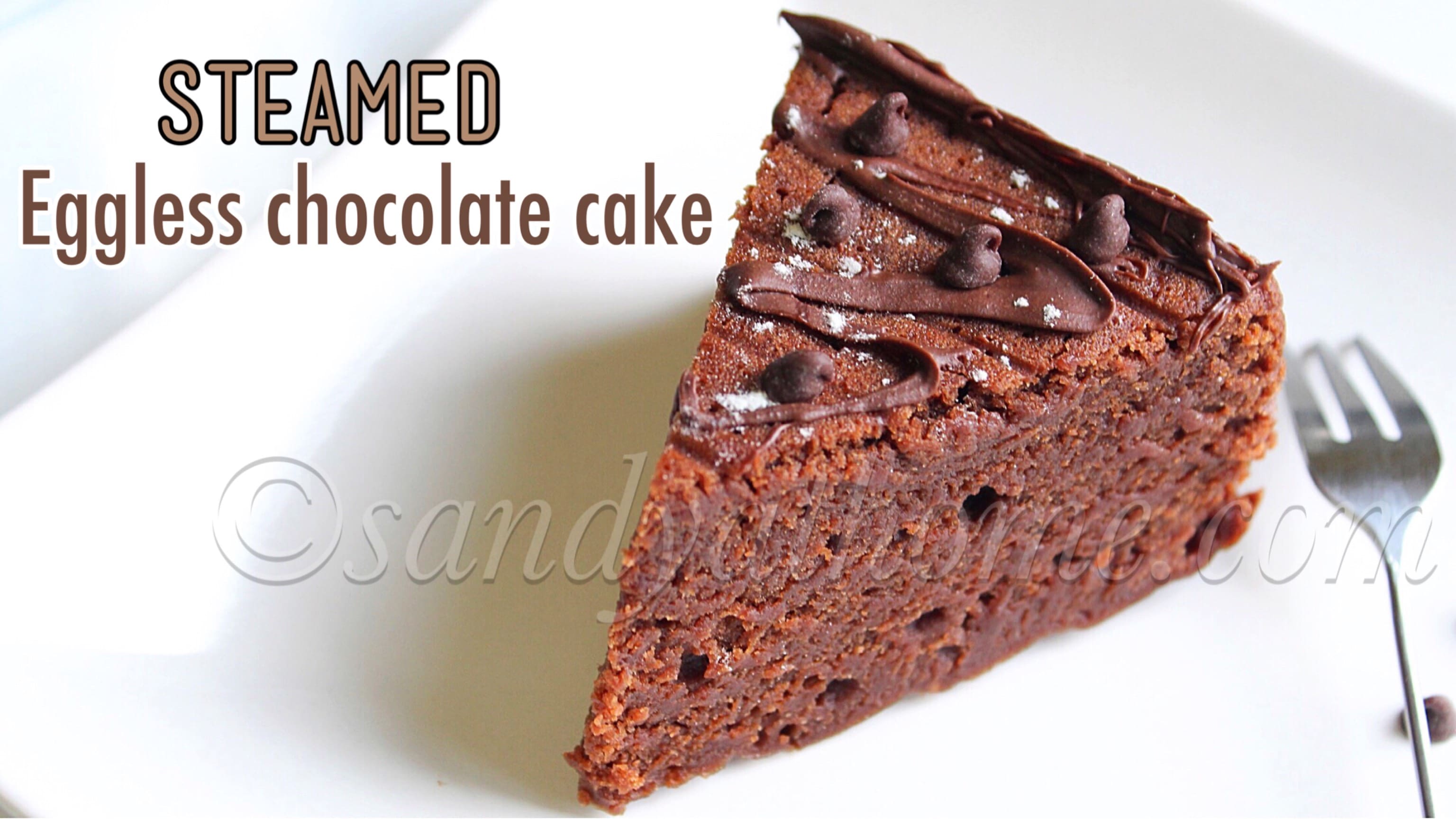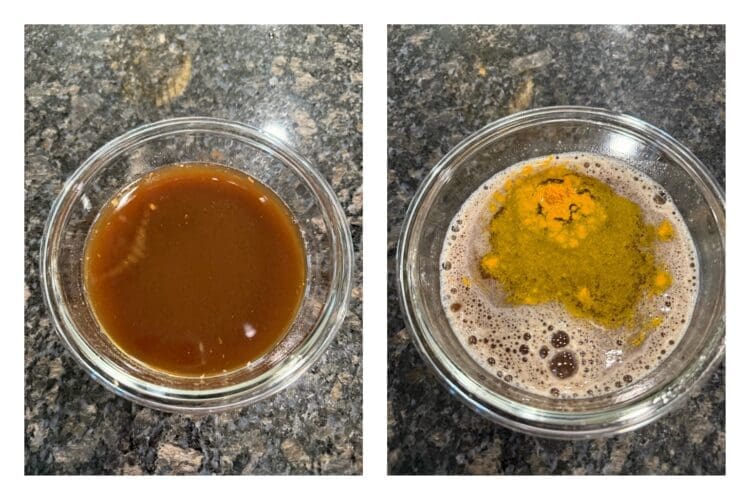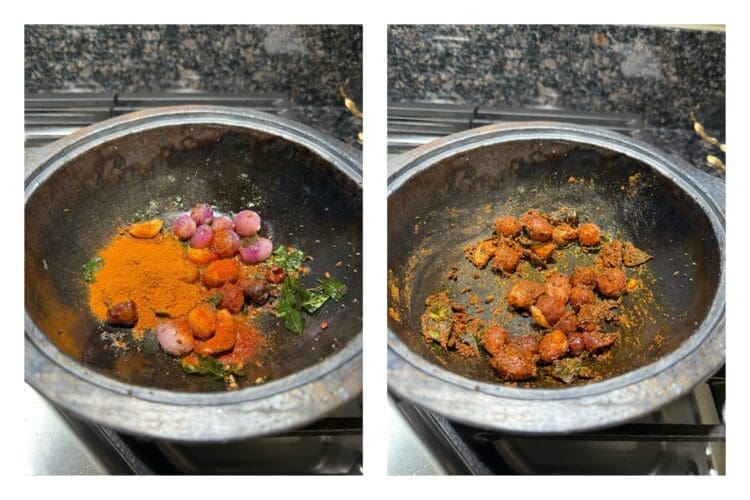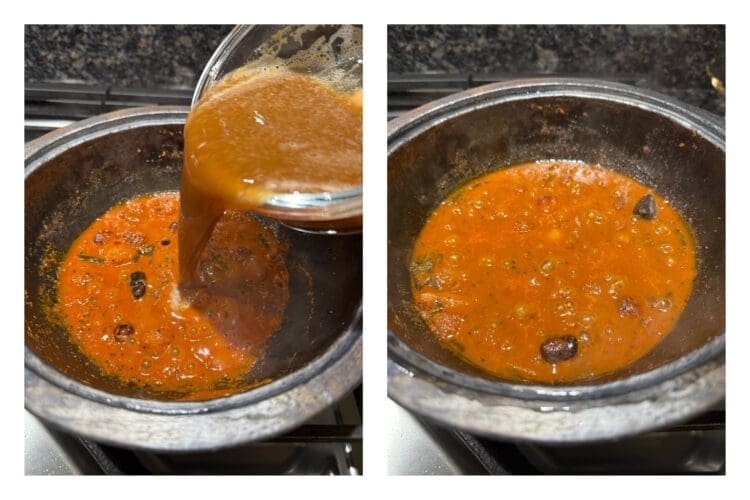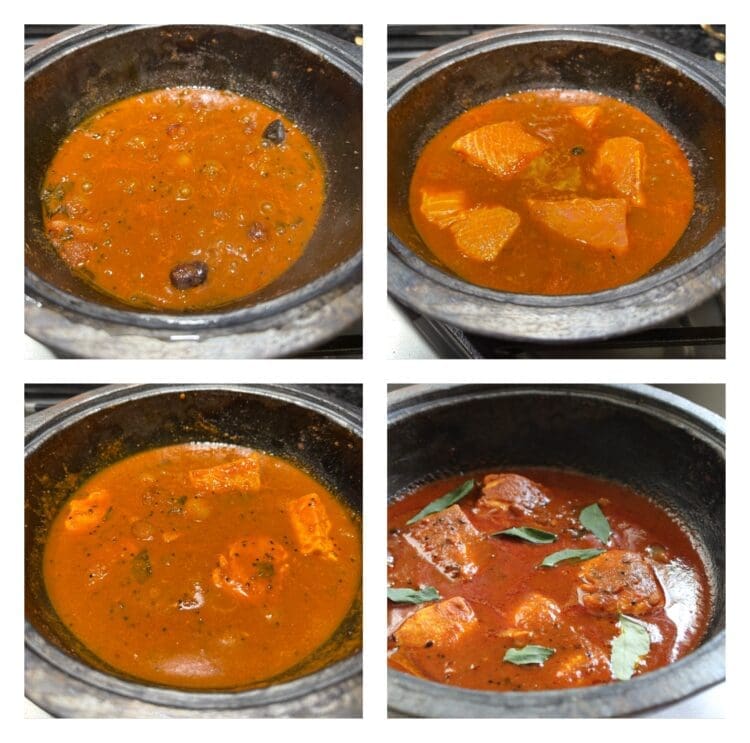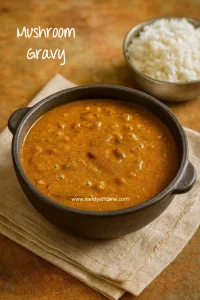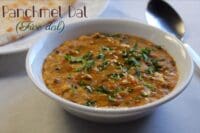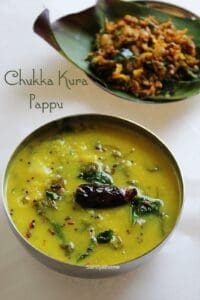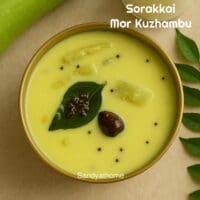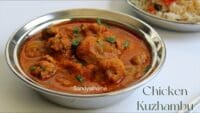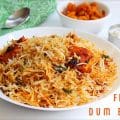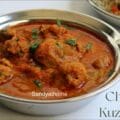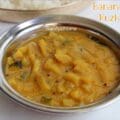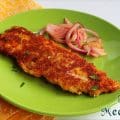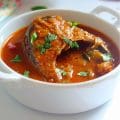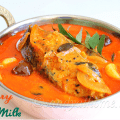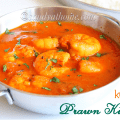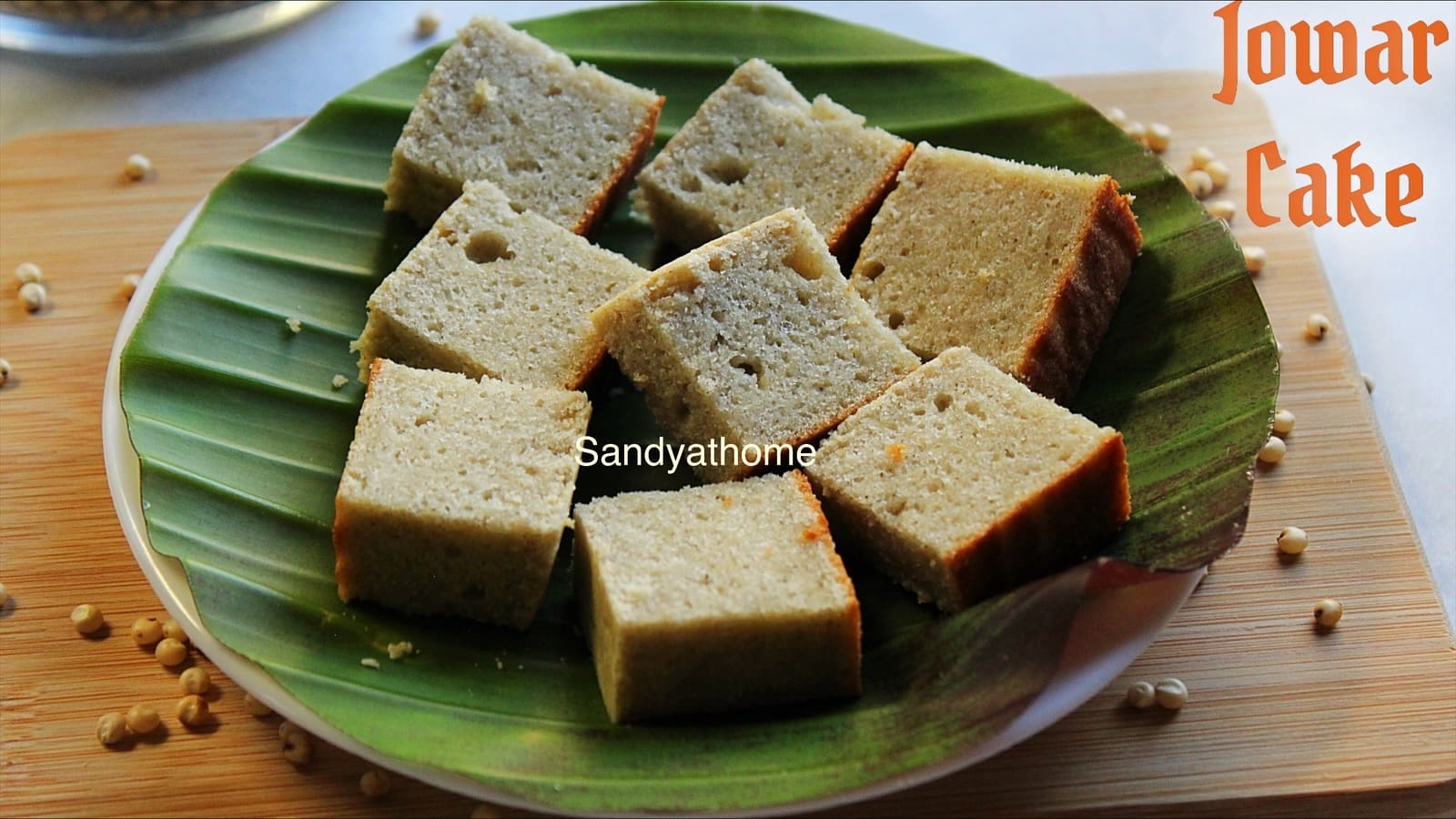A Tamarind-Rich Fish Curry Inspired by Tamil Meen Kuzhambu and Andhra Fish curry
There’s something deeply nostalgic about a pot of bubbling fish kuzhambu on the stove — especially the kind simmered with tamarind, crushed garlic, and gingelly oil. Growing up, we didn’t make it every day, but when we did, it was a feast. Our family friends or our private cooks would bring over hot, freshly made meen kulambu — always paired with spicy crab roast or prawns, and served with raw onion and steaming rice. It was humble, but it felt like home.
This recipe brings that memory to life — but with a small twist: we’re using salmon instead of traditional country fish. This Salmon Fish Kuzhambu is a mix of Tamil and Andhra flavors, inspired by Chepala Pulusu from coastal Andhra kitchens and our own South Indian Meen Kulambu traditions.
Made with no coconut, no grinding, and just a blend of homemade kulambu thool and ground tomatoes, this is a tamarind-based South Indian fish curry that’s easy to make, yet rich in flavor. If you’re searching for an easy fish kuzhambu, a weekday-friendly no coconut fish curry, or a modern take on chepala pulusu using salmon, this recipe checks every box.
A Bite of History – Where Tamil Meen Kuzhambu Meets Andhra Chepala Pulusu
Long before recipe books and restaurant menus, fish kuzhambu simmered slowly in clay pots across both Tamil Nadu and Andhra Pradesh. While the spices, names, and fish types varied, the idea remained the same: fresh catch + tamarind + patience.
In ancient Tamilakam, especially the coastal Neithal landscapes, women cooked fish in pots using just tamarind, black pepper, and gingelly oil — no coconut, no tomatoes. These early meen kulambu were mentioned in Sangam-era texts like Pattinappaalai and Akananuru, reflecting a cuisine that was bold, clean, and deeply connected to the sea.
Across the Telugu-speaking coasts of Krishna, Godavari, and Srikakulam, a similar dish emerged — Chepala Pulusu. Known for its fiery chili hit, garlic tempering, and day-after flavor, this curry was (and still is) a staple in Andhra homes. It uses no coconut, minimal ingredients, and focuses on drawing out flavor from tamarind and red chilies, usually paired with freshwater fish like rohu or catla.
The method was rustic — fish would be added last and cooked gently in the residual heat of a wood fire, in manchatti (clay pot).
Jump to Recipe
So what about Salmon in ancient times?
Salmon, being a cold-water fish, was not native to South India and was not used in traditional Tamil or Telugu kitchens. However, the cooking method — tamarind base + gingelly oil + slow simmer — is completely authentic.
So while this exact salmon version is modern, the technique and flavor profile are rooted deeply in Neithal cuisine — the original fish eaters of Tamilakam.
This makes your recipe a perfect blend of ancient method and modern ingredient — a continuation of tradition, not a break from it
Ingredients and Their Roles in Andhra Fish Curry
| Ingredient | Role in the Kuzhambu |
|---|---|
| Salmon | Absorbs tamarind and spice flavors well; firm and modern substitute for traditional fish |
| Gingelly Oil | Adds aroma, depth, and authentic taste; essential in Tamil & Andhra cooking |
| Garlic (crushed) | Neutralizes fishy smell; gives pungency and base flavor to the gravy |
| Shallots / Onion | Adds sweetness, texture, and body; balances tamarind’s sharpness |
| Tomatoes (ground) | Provides smoothness and mild acidity; helps thicken the kulambu |
| Tamarind | Base souring agent; gives the dish its signature tang and shelf life |
| Kulambu Thool | Replaces fresh-ground masalas; adds heat, color, spice depth easily |
| Turmeric Powder | Removes raw odor, adds earthy color, and is medicinal |
| Salt | Enhances all the other flavors; draws taste out from the fish and tamarind |
| Curry Leaves | Adds fragrance and a fresh, unmistakable South Indian identity |
| Black Pepper Powder | Used optionally to finish; adds warmth and complexity without overpowering spice |
You May Also Like these Recipes:
Directions to make Salmon Fish Kuzhambu with step by step images
- Clean the Fish
Wash 500g salmon with turmeric and salt. Rinse and set aside.
- Prepare Tamarind Water
Soak a small lemon-sized tamarind ball in warm water. Extract 1½ cups thick tamarind juice. Add turmeric and mix well.
- Sauté the Base
Heat 4 tbsp gingelly oil. Add dry red chili, mustard seeds, cumin seeds, fenugreek seeds, curry leaves, crushed garlic, and shallots. Sauté until golden.
- Add spices:
Add turmeric powder, red chilli powder and Kuzhambu thool or Vatha kuzhambu thool. Sauté the spices for 1–2 minutes until they bloom in the oil.
- Add Tomato
Add ground paste of 2 tomatoes. Cook until oil separates and raw smell disappears.
- Add Tamarind
Pour in tamarind extract. Boil for 7–8 minutes.
- Add Salmon
Gently place the salmon pieces into the boiling kuzhambu. Do not stir with a spoon — swirl the pot gently. Simmer for 4 to 5 minutes.
- Finish and Rest
Sprinkle pepper powder (optional) and drizzle 1 tsp gingelly oil. Let it rest for 30 minutes before serving for best flavor.
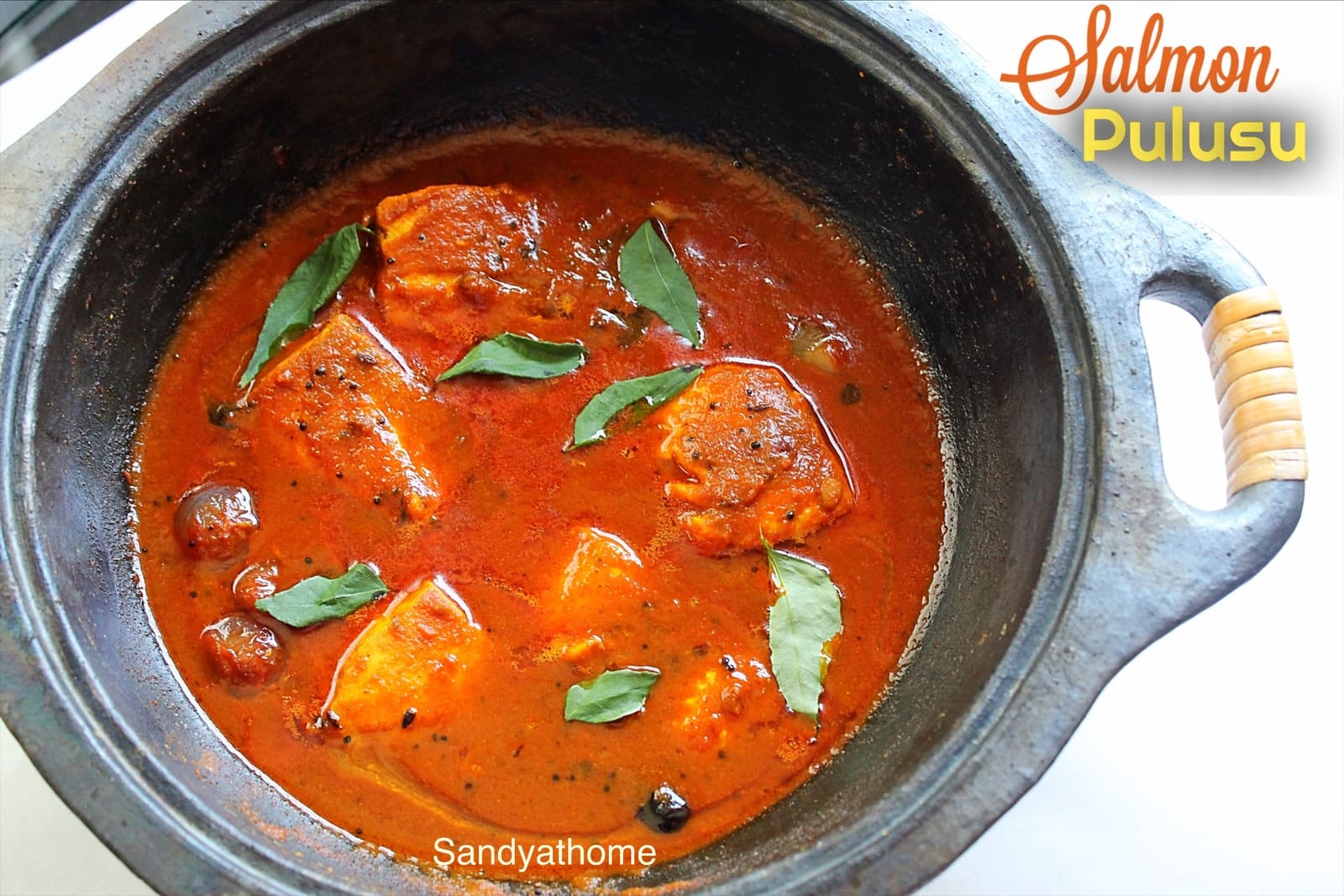
Pro Tips for Perfect Salmon Fish Kuzhambu
- Use thick fish slices: Salmon fillets or steaks cut into thick pieces hold shape better and soak up the kuzhambu without breaking.
- Don’t stir after adding fish: Just swirl the pot gently to prevent salmon from flaking.
- Let it rest: Fish kuzhambu tastes even better after 30 minutes or the next day — the tamarind and spices deepen beautifully.
- Use gingelly oil only: For authentic taste and aroma. Do not replace with regular vegetable or sunflower oil.
- Cook tomatoes thoroughly: Since you’re not using coconut, the ground tomatoes help thicken the gravy and give body. Let the raw smell go completely.
Serving Suggestions for No Coconut Fish curry
- Serve hot with steamed rice and a side of raw small onion + lemon wedge.
- Pair with ragi kali, kambu kali, or even curd rice as a contrast.
- Tastes amazing with dosa, idli, or idiyappam the next day — a true South Indian leftover treasure.
- Add a side of fish fry or crab roast for a complete non-veg feast.
Faq to make South Indian Fish Curry
Yes! While salmon isn’t native to Indian waters, it works beautifully in South Indian fish curry recipes like meen kulambu and chepala pulusu. Its firm texture absorbs tamarind and spices well without breaking.
Meen Kuzhambu (Tamil Nadu) often uses gingelly oil, shallots, garlic, and tamarind with a mild-to-medium spice profile.
Chepala Pulusu (Andhra Pradesh) uses similar base ingredients but is usually spicier, with more red chili powder and garlic, and sometimes finished in an iron pan for added depth.
To make a no coconut fish curry, use a tamarind base with ground tomatoes for thickness. Spice it with chili powder, coriander powder, turmeric, and finish with gingelly oil. No grinding of masala or coconut is needed.
Absolutely! Fish kuzhambu tastes better the next day as the flavors settle, the tamarind mellows, and the fish absorbs the gravy completely. Just reheat gently before serving.
Kuzhambu Recipes
Kalan Kuzhambu, How to make South Indian Mushroom Gravy
Kalan Kuzhambu is a flavorful South Indian mushroom kuzhambu made with a freshly ground onion–tomato–coconut masala. This thick, aromatic curry pairs perfectly with steamed rice, idli, or dosa and comes together quickly.
Andhra style Kale Pappu, How to make Kale Paruppu
A wholesome South Indian–style dal made with toor dal, garlic, and fresh kale leaves. Whether you call it Kale Paruppu, Kale Pappu, or Kale Dal, this one-pot curry brings together traditional flavors and modern greens for a nourishing lunch
Amla Rasam, Usirikaya Charu, How to make Nellikai Rasam recipe
This traditional Amla Rasam, also known as Usirikaya Chaaru, is made with halved gooseberries, garlic, and freshly crushed spices. It starts with tempering to enhance flavor and is perfect for summer or anytime your body needs a gentle, immunity-boosting dish.
Eral Kaikari Kuzhambu, How to make Prawn Kuzhambu with Vegetables
A forgotten Tamil coastal kuzhambu where prawns, brinjal, and drumstick simmer in a light coconut-jeera masala — gently spiced, soulfully simple, and perfect with hot rice.
Paruppu Urundai Mor Kuzhambu, How to make Mor Kuzhambu
Paruppu Urundai Mor Kuzhambu is a traditional Tamil kuzhambu made with steamed lentil balls simmered in a cooling curd and coconut gravy — perfect for summer lunches and no onion, no garlic cooking days.
Panchmel Dal recipe, How to make Panchratna Dal
Panchmel Dal, also known as Panchratna Dal, is a traditional Rajasthani dish made using five dals, cooked with a fragrant tempering of ghee, cumin, and chilies. Serve with rice or roti for a soulful, protein-packed Indian meal.
How to make Chukka Kura Pappu, Andhra Sorrel leaves Pappu
A traditional Andhra-style dal made with sour chukka kura (Indian sorrel) and toor dal — this no-onion, no-tomato recipe is rooted in village kitchens and summer wisdom.
Bottle Gourd Mor Kuzhambu, How to make Sorakkai Mor Kuzhambu
Bottle gourd mor kuzhambu is a summer-favorite Tamil-style buttermilk curry made with sorakkai, coconut paste, and simple spices. This dump-style kuzhambu is soothing, gut-friendly, and part of ancient revival recipes from South India.
Muslim-Style Chicken Kuzhambu, How to make Chicken Kuzhambu
This rich Muslim-style chicken kuzhambu is made with ground coconut, whole spices, and pepper — a traditional family favorite perfect for Bakrid and beyond.
Seppankizhangu kara kuzhambu, Arbi kara kuzhambu
Seppankizhangu kara kuzhambu/ Arbi kara kuzhambu is a delicious tamarind based gravy/ kuzhambu prepared with Seppankizhangu/…
